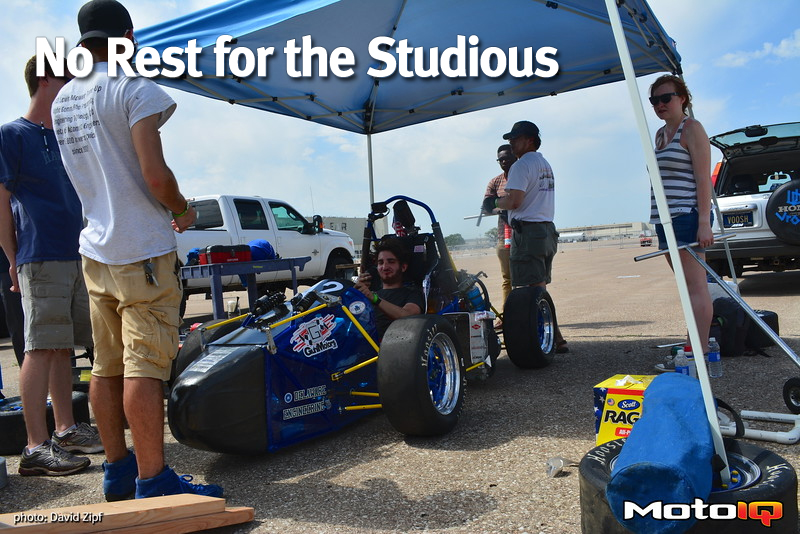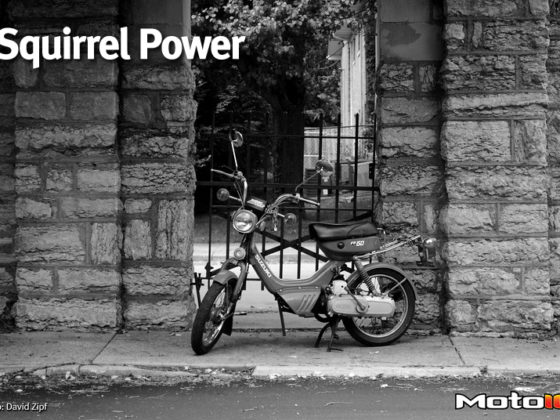,
 Back to Guhl’s Dynapack dyno and with the new intake and better tuning we made…exactly the same power as before. However our focus was on smoothing the torque curve and working out part throttle and transition hiccups. Guhl did just that and our car was running better than ever.
Back to Guhl’s Dynapack dyno and with the new intake and better tuning we made…exactly the same power as before. However our focus was on smoothing the torque curve and working out part throttle and transition hiccups. Guhl did just that and our car was running better than ever.Hey look, I found some dyno footage (turn down the volume). You’ll notice how much attention we’re paying to the rear end. Luckily, our fixes solved all of the deflection. I think these were baseline pulls to get the motor warmed up (check out how the computer fan lights up on the oil cooler as the engine slips in and out of temperature range). While we had been testing with our older intake, for these dyno sessions we were using our shorter V2 design, which required some mapping changes. We also got around to the part throttle tuning we missed out on when the rear end broke.
 If you need a bike engine tuned in the PA area, this is the man to call. Most of the bike OEMs have his number and call him when they need a custom show bike retuned. Don Guhl knows bike engines and electronics inside and out and the tuning software he used to hack our engine’s ECU is custom designed to his specs. These guys also work with alcohol burning micro sprints. We got to see one at full bore and using the exact same GSXR600 as us, it made 150 hp. By using alcohol and a Guhl designed intake and exhaust, they make 30 more hp than stock and more than double what our little SAE car was making.
If you need a bike engine tuned in the PA area, this is the man to call. Most of the bike OEMs have his number and call him when they need a custom show bike retuned. Don Guhl knows bike engines and electronics inside and out and the tuning software he used to hack our engine’s ECU is custom designed to his specs. These guys also work with alcohol burning micro sprints. We got to see one at full bore and using the exact same GSXR600 as us, it made 150 hp. By using alcohol and a Guhl designed intake and exhaust, they make 30 more hp than stock and more than double what our little SAE car was making. If you’re wondering how the active exhaust worked, it didn’t. We could not get the ECU to activate the actuator, so we never found out if the system worked. Luckily the throttle is sprung open, so it doesn’t hurt exhaust flow too much. The previous BHR13 made 90 horsepower, while the BHR14 only made 65. All of this loss can be attributed to the intake manifold and exhaust. We were looking for a wider powerband and more torque and ended up sacrificing a lot of horsepower. We did flatten the torque curve a bit, but the power loss is more than we expected. This makes our suspension and chassis gains even more impressive: We were beating our old car with 25 less horsepower!
If you’re wondering how the active exhaust worked, it didn’t. We could not get the ECU to activate the actuator, so we never found out if the system worked. Luckily the throttle is sprung open, so it doesn’t hurt exhaust flow too much. The previous BHR13 made 90 horsepower, while the BHR14 only made 65. All of this loss can be attributed to the intake manifold and exhaust. We were looking for a wider powerband and more torque and ended up sacrificing a lot of horsepower. We did flatten the torque curve a bit, but the power loss is more than we expected. This makes our suspension and chassis gains even more impressive: We were beating our old car with 25 less horsepower!
 The AIM dash was mounted using some 3D printed mounts, giving us the freedom to mount the dash in perfect view of the driver. The switch and lighting panels were also 3D printed. This allowed us to notch them to fit perfectly over the tubes, to which they are zip tied. Four lights on the left indicate fuel level, oil pressure, fuel pump, and neutral (which can be hard to find with a motorcycle box. The neutral light is hidden by the steering wheel in this shot).
The AIM dash was mounted using some 3D printed mounts, giving us the freedom to mount the dash in perfect view of the driver. The switch and lighting panels were also 3D printed. This allowed us to notch them to fit perfectly over the tubes, to which they are zip tied. Four lights on the left indicate fuel level, oil pressure, fuel pump, and neutral (which can be hard to find with a motorcycle box. The neutral light is hidden by the steering wheel in this shot).  On the right, the starter button, kill switch, and horn reside. Horn? That’s right, we have a horn. It may sound silly, but it’s an important safety feature. See SAE cars are raced in autocrosses and most SAE cars are low enough that they’re almost completely out of the sightlines of drivers in a full-size car. If a car is backing up, for example, they usually can’t see an SAE car. This happened to us at one autocross and we nearly got run over! So we added a GSXR horn to this car to prevent a recurrence of that situation.
On the right, the starter button, kill switch, and horn reside. Horn? That’s right, we have a horn. It may sound silly, but it’s an important safety feature. See SAE cars are raced in autocrosses and most SAE cars are low enough that they’re almost completely out of the sightlines of drivers in a full-size car. If a car is backing up, for example, they usually can’t see an SAE car. This happened to us at one autocross and we nearly got run over! So we added a GSXR horn to this car to prevent a recurrence of that situation.


